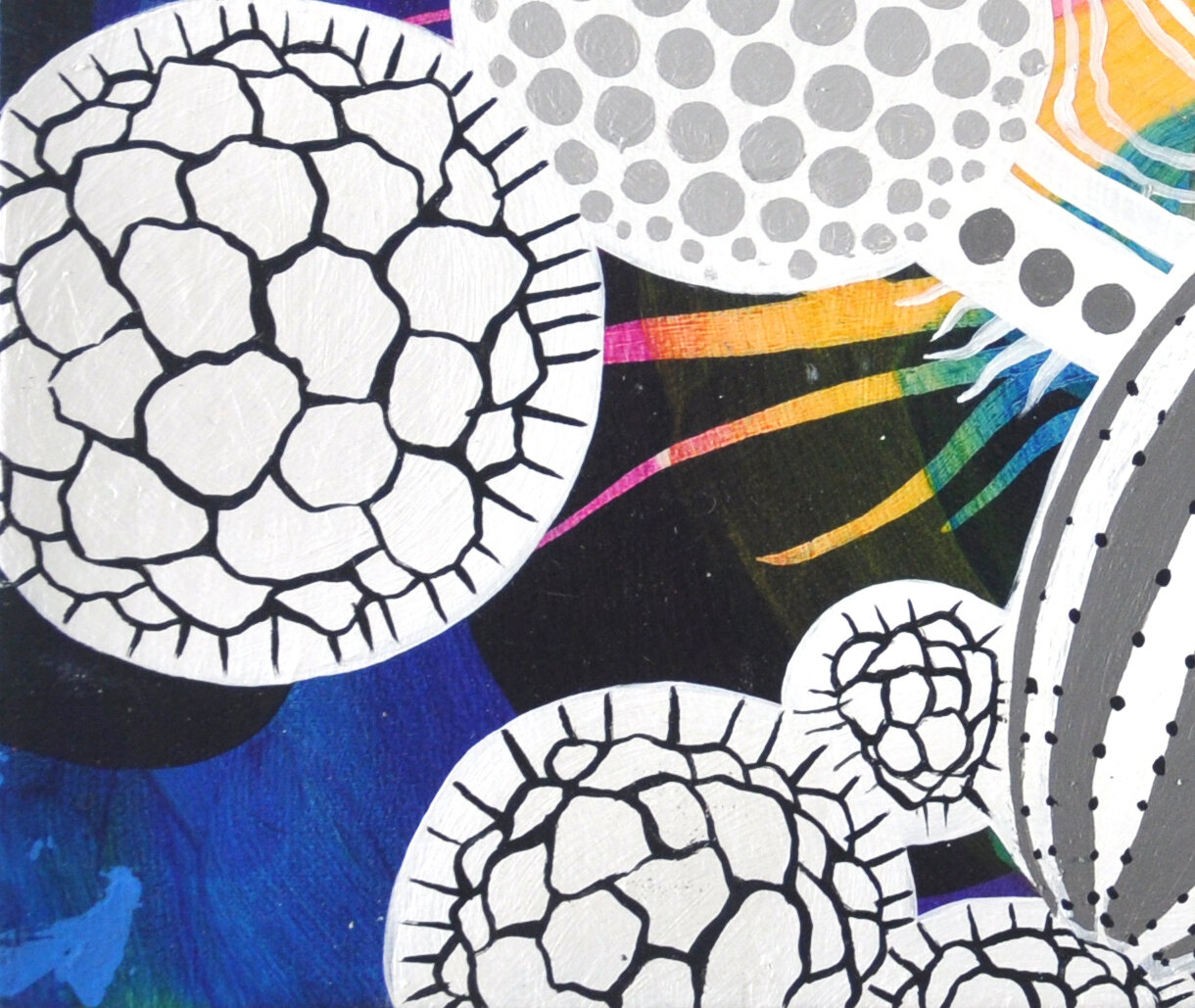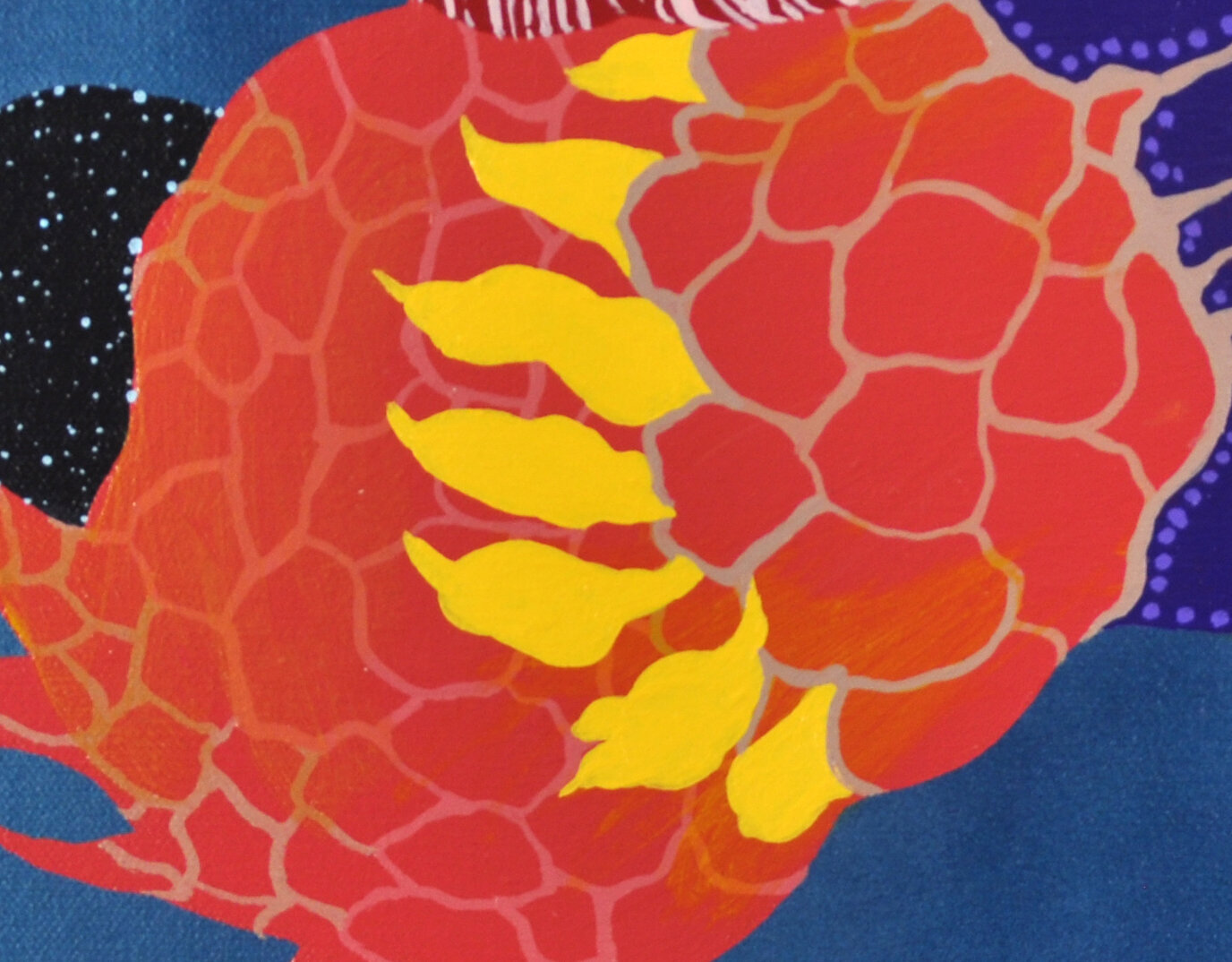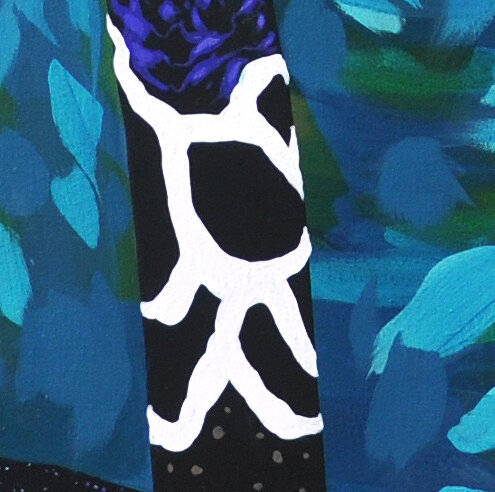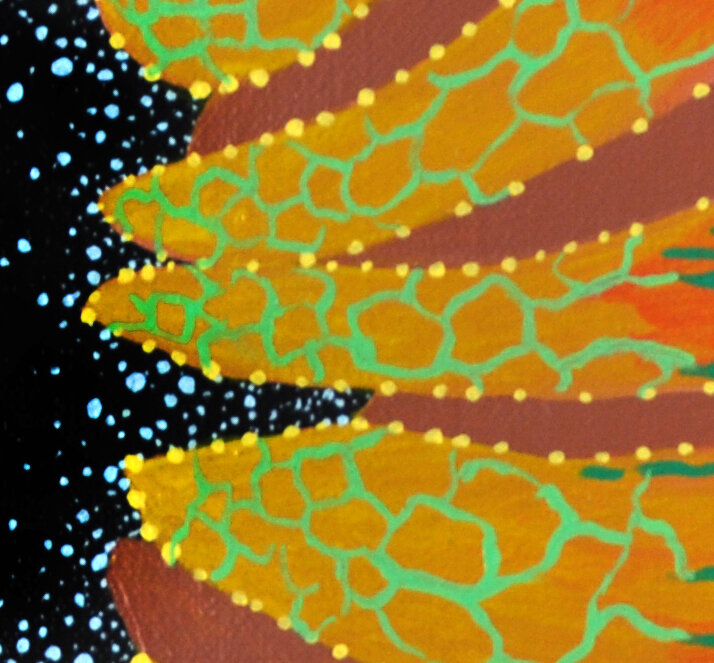Hydrothermal Eyes, 16” x 20”, acrylic on panel, 2018.
The title points to geological features and human emotions and asks the viewer to consider the similarities between them. Hydrothermal-like ripples encircle kelp forests and bioluminescent organisms exhibit aquatic wonder in the painting. Layers of subjects like tracheid cells, species camouflage, and the cosmos also inspire the artwork. Humans communicate extreme emotions with the eye in the same way as the hydrothermal temperatures exhibit extreme geological features. The constellation of subjects reveals interrelationships and connections between the small to large in our world. I compose at macro and micro levels and the scale of the subject moves from aerial to microscopic. I have a fascination in depicting these different scales and perspectives in the same composition.
I enjoy the potential metaphors in the hydrothermal hot spring features I saw at Yellowstone National Park. I chose this subject because of the depth of beauty in the colors but also the contrast that it is dangerous to humans to touch. The natural phenomenon of the heated water below the earth’s crust is an extreme environment in our world. There are trillions of microorganisms called extremophiles that make up the rings of vivid colors in these features. These creatures live within extreme conditions and are an unexpected metaphor. I like that it can be abstract on a first glance but also reference something that is somewhat recognizable. That mystery is compelling to create and explore in my paintings. The Burnt Umber webbing form in the lower right was inspired by looking at images of tracheids cells in plants.








